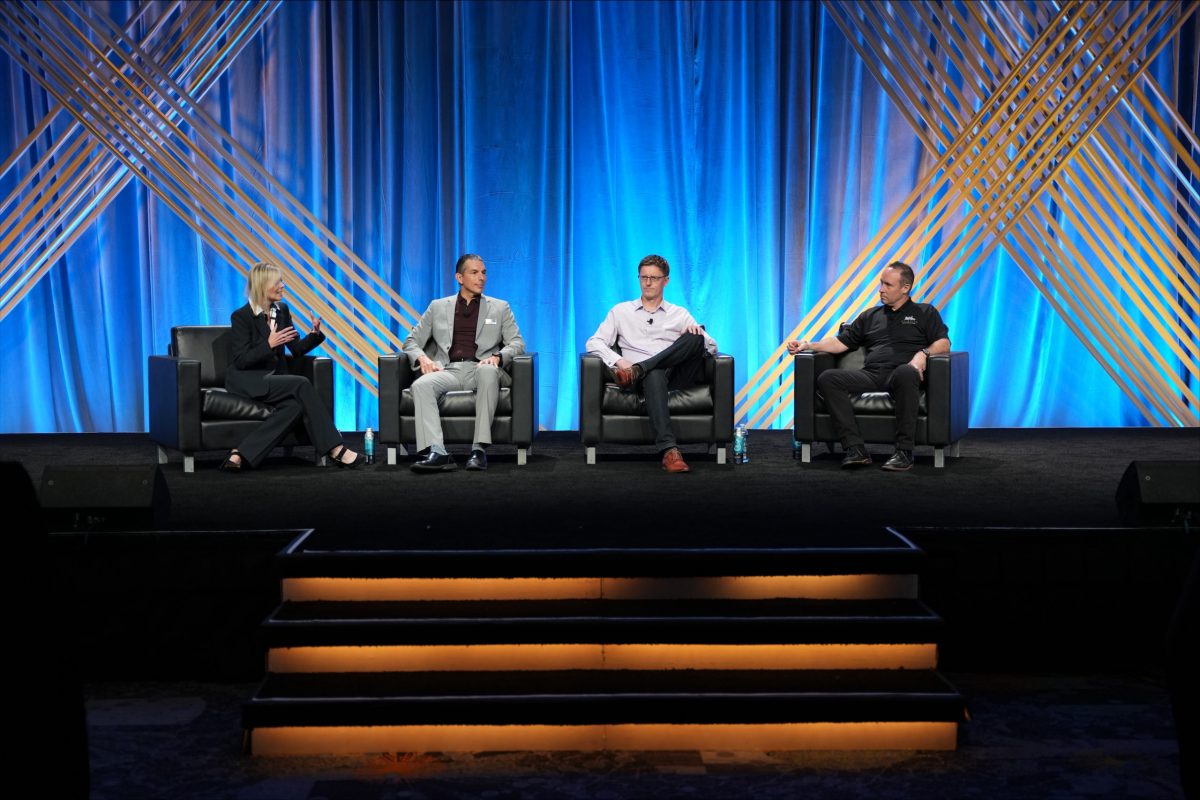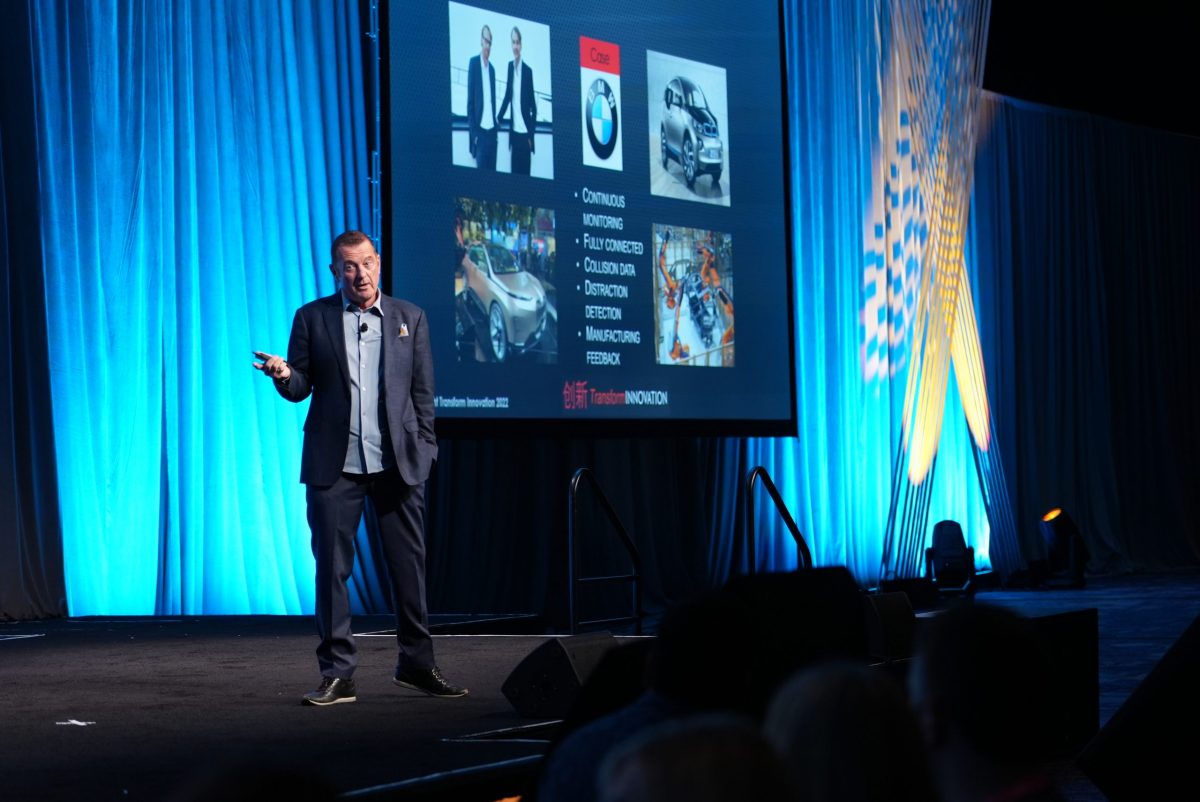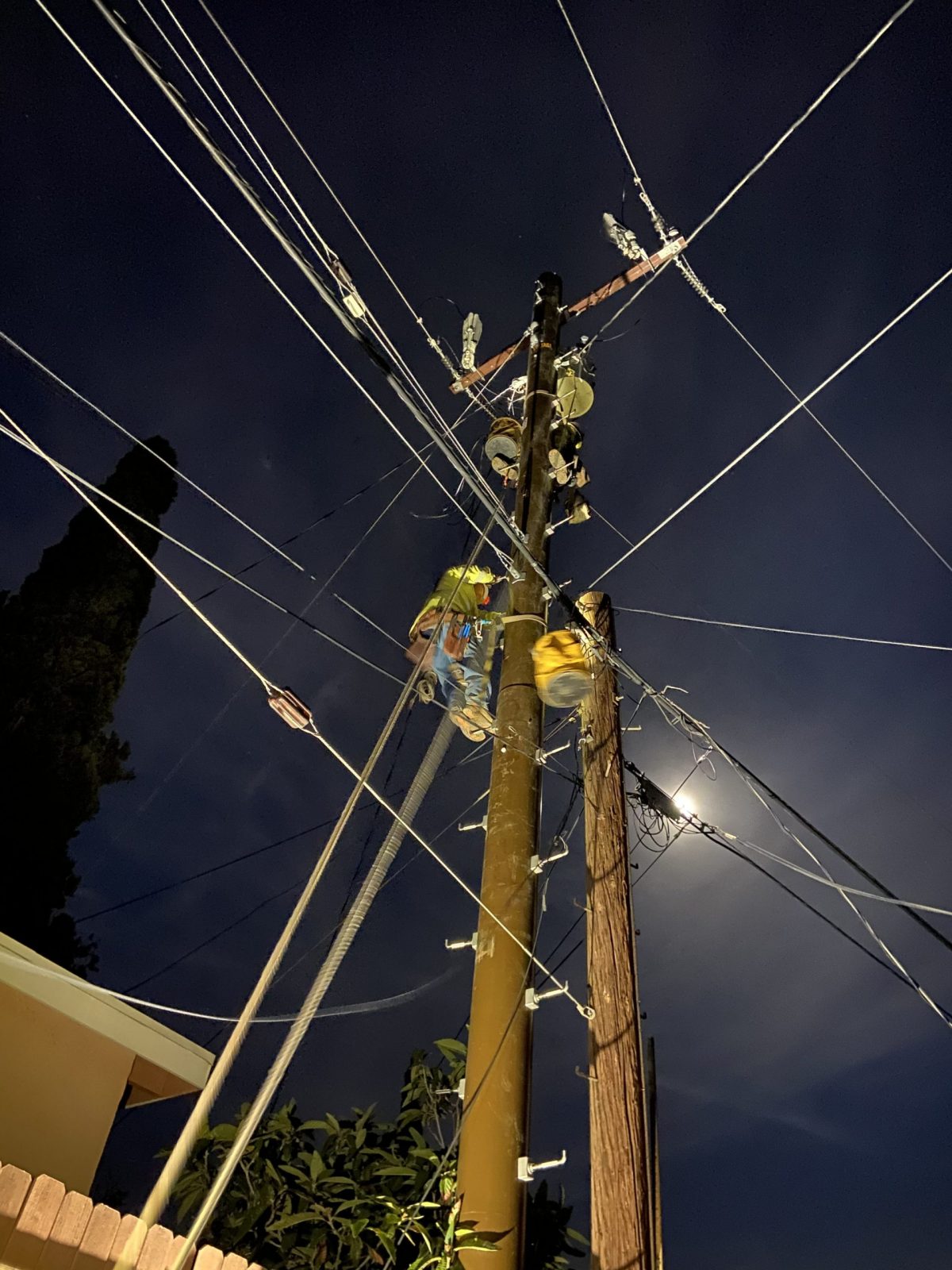

An Innovator’s Insight into Aviation
Linden S. Blue is an aviation pioneer. He and his brother Neal were dubbed “the Flying Blue brothers” and depicted on the April 8, 1957, cover of Life Magazine as members of the Yale Aerial Expedition to South America.
Sixty-five years later, Blue has compiled an impressive resume in the aerospace industry, including president and CEO of Beech Aircraft Corporation, a director of Raytheon Company, CEO of Lear Fan Limited, executive vice president and general manager of Gates Learjet Corporation and managing director of Spectrum Aeronautical. He continues to be energized by aeronautics, as well as advanced materials such as composites that allow for industry innovations.
“The physical properties of composites are compelling, there’s no question about that, compared to all the metals – aluminum, titanium, steel,” said Blue during a keynote address at ACMA’s Advanced Air Mobility Composites Technology Days in the spring. “And the tremendous advantage is getting away from fasteners. That’s where you get a lot of weight savings and labor savings.”
Blue, who currently is an owner and vice chairman of San Diego-based General Atomics, discussed the evolution of composites and much more in his keynote address, which is featured here in an abridged version with subheads, followed by a question-and-answer session with Tech Day moderators John Busel, vice president of ACMA’s Composites Growth Initiative, and Dan Coughlin, leader of industrial collaborations at Oak Ridge National Laboratory.
A ‘Better Way’ with Composites
“If you really want to learn to love composites, you ought to build airplanes out of aluminum and rivets for five years as I did at Learjet. We made some wonderful airplanes out of aluminum, but when you walked through the factory there was a cacophony of rivet guns. When you see the labor intensiveness of it, you’ve just got to say, ‘There must be a better way.’ Well, what served me in composites was thinking there must be a better way.
At one point, I visited the [Learjet] Aeronca factory in Ohio to learn about the thrust reversers for their jets. In the process, I saw they had made a composite flap track fairing for a 707 or 747. That part was very large – about the size of their jet fuselage. And in fact the shape was a lot like their jet fuselage.
It was quite a revelation to me to see how they were making composites, then go back to [my factory] and hear the rivet guns and see the difficulties of blowing holes in material and putting in rivets and all the quality control factors that go into that. At that time, as general manager of Learjet I was always looking at better ways of doing things.
It’s a matter of matching available technology to a need. In this case, Learjet needed a more economical version of its model 25 [high-speed business jet aircraft]. We ended up being the first people to apply winglets to our airplanes. The advantage for the Learjet is we were able to add wing area aspect ratio and get by with less thrust.”
Early Adoption of New Technologies
“When Lear Fan was embryonic, they recruited me. I was very willing to listen to their proposal because I had seen what composites could do. I ended up becoming CEO of Lear Fan. [The turboprop airplane] was first-generation composites. We essentially were trying to make metal parts out of composites. You could do it. In fact, prior to that we made a landing gear door out of composites. But the idea of doing a whole plane was a huge step beyond that.
In the first generation, when you try to make ‘black aluminum’ [CFRP] parts you end up with most of the disadvantages of aluminum and few of the advantages of composites. So, you hope to find a better solution.
Second generation was honeycomb sandwich panel, and that was a technology we used with the Starship program at Beech. I left Lear Fan and became the CEO of Beech Aircraft. The idea was to bring Beech into the modern era with the best possible materials. Honeycomb sandwich panels were good, but we didn’t get the weight savings and there were other issues. Sandwich panels are wonderful in many respects, but they have a lot of limitations as well.The third generation is [representative of what] the 787 did and dramatically improved technology over honeycomb sandwich panels. Honeycomb sandwich panels had been used in vertical stabilizers for some of the big airplanes before the 787’s effort to make the entire airframe out of composites.
The 787 is simply a better airplane. One of its major advantages, in addition to composites, is reduction in the number of fasteners by a factor of 100 compared to a similarly sized 777. When you reduce the things that put airplanes together by a factor of 100 that’s a tremendous opportunity for saving time and avoiding all the problems you get into when you drill a hole in a material.”
Next-Generation Composite Materials
“In the fourth generation, there is the potential for reducing fasteners by another factor of 10, which would give you 1,000 times fewer fasteners than conventional aluminum. That’s what we have done with the Spectrum business jet. It’s not finished or certified, but it has a great deal of promise. And instead of fasteners it relies primarily on co-curing – making large parts that go together homogeneously in the curing process.
Perhaps the fifth generation will start to make greater use of thermoplastics. Thermoplastics have the advantage of lower knock-down factors and the ability to weld structures together at very high temperatures. That gives you an integrity in the combining of parts much better than either co-curing or bonding. I can’t say that thermoplastics are ready to vie in all respects, but there is a great deal of promise there.
I feel very privileged to have been involved in all 4 [developmental] stages that exist today, and I’m hoping to be involved in the fifth stage as well.”
The Role of AI and Unmanned Aircraft
“Artificial intelligence is a factor in almost everything we do in life now. So many things are enabled by A.I., starting with the kinds of warnings you get in cars these days – major safety factors. So, A.I. is an increasing factor [in aerospace].
Simplistically, if you rely on A.I., you have the potential of eliminating the workload on pilots – and maybe ultimately pilots altogether. When you consider that probably 85% of aircraft accidents are due to pilot error, it stands to reason that if you get rid of them you might increase the safety factor. Now, I am a pilot myself and I don’t want to eliminate that part of it. I have over 10,000 hours now, and I’ve loved every one of them. But still, if I’m approaching minimums [when landing] a jet, I’d like to have auto pilot. With A.I., the autopilot can do the approach more accurately than I can all by myself.
The military is another huge application for advanced composites. The reason that our Predator drones are so effective is because they are light, and we are able to fly off for up to 48 hours without refueling – an amazing accomplishment. I think we are just beginning to see the activity of unpiloted airplanes in various versions for military actions can be done much less expensively. You have the huge advantage of endurance, so you are already up in the air when a problem occurs, and you can take action immediately.”
Fueling Future Aircraft
“The question of fuels – hydrogen, electric or hydrocarbons – that’s still very much up in the air. I think there is a place for all. But I also happen to believe that the CO2 factor is overrated as a problem. In fact, CO2 is the thing that makes everything you see in our life green. It’s essential to plant life. It’s essential to all life. The problem with air pollution is primarily carbon particulates, not CO2.
Even so, hydrogen is a natural fuel and there is plenty of that in the universe. Of course, electric energy has its advantage also. But the amount of energy – the power you can get – in liquid fuel, namely jet fuel, at this time is at least 20 times and maybe as many as 50 times more than you can get with batteries. Batteries will continue to improve, but for long-endurance airplanes that technology is not here. For advanced air mobility, perhaps it is because those missions are relatively short.”
Q & A Session
Coughlin: What do you see as the next couple of things that the aerospace industry needs to do to take advantage of the 5th generation of composites that’s different from the 4th generation?
Blue: As I mentioned, the primary advantage of the 5th generation is reduction in knock-down factors – knock-down for high humidity and high temperature – and thermoplastics gives you that, potentially up to 20%. That kind of improvement you have to consider if you build airplanes. It’s the combination of innovation that is constantly going on, particularly with composites, because of the inherent physical properties of strength and stiffness that are critical to designing airplanes.
John Busel: You brought up A.I. and smart composites – understanding what’s going on in the system at all times. [The ability to] collect all of that information, read it and record things so you can improve on how the aircraft is performing almost at any moment in time. That’s pretty sophisticated.
Blue: Well, that’s right. And that goes back to A.I. The fact is that computers can analyze all kinds of parameters on a continual basis at a speed far greater than human beings. And that’s good. And A.I. can sort through the noise and important factors you need to look at. So, a combination of A.I. and composites has tremendous potential for improving safety, reducing costs and having better products all the way around.
Coughlin: You talked about if you don’t design with the end material in mind, then you’re not taking full advantage of the composite. So what advice do you have for folks wading into this area and looking at the different options available?
Blue: First of all, have fun! There’s nothing more fun than making better products of all descriptions. But, as I said earlier, you’ve got to combine that with realism. We didn’t even talk about autoclaves and ovens and the potential of new resin systems for processes that are perhaps out-of-autoclave and out-of-oven. And that means lower costs, less time and perhaps better products as a result.
Coughlin: What do you think the first applications, in terms of market pull, will be for advanced air mobility?
Blue: I suppose it’s the urban part of advanced air mobility. Again, the weather factor is something I remain uncomfortable with. Flying is great when the weather is good, but you can get in a lot of trouble if you are not prepared for bad weather. And unfortunately, weather is a factor we all have to deal with.
I suppose it’s theoretically easier to control air mobility vehicles than it is to control unpiloted cars. The two technologies perhaps go together. If we are able to show that automated driving cars work and produce a better safety result all around, that will tell you it’s probably applicable to airplanes. In the meantime, I would not want to go up in an airplane that was totally without a pilot.
Remotely piloted airplanes for military use are something else. They have all the advantages of the mission in terms of endurance … and not having to worry about the physical needs of pilots. I’m a believer in remotely and unpiloted A.I.-enabled use of these vehicles. But we are not quite there yet. Will we get there? I would say almost certainly we will.
Susan Keen Flynn is managing editor of Composites Manufacturing magazine. Email comments to sflynn@keenconcepts.net.
Aviation pioneer Linden S. Blue is an owner and vice chairman of San Diego-based General Atomics.

SUBSCRIBE TO CM MAGAZINE
Composites Manufacturing Magazine is the official publication of the American Composites Manufacturers Association. Subscribe to get a free annual subscription to Composites Manufacturing Magazine and receive composites industry insights you can’t get anywhere else.









